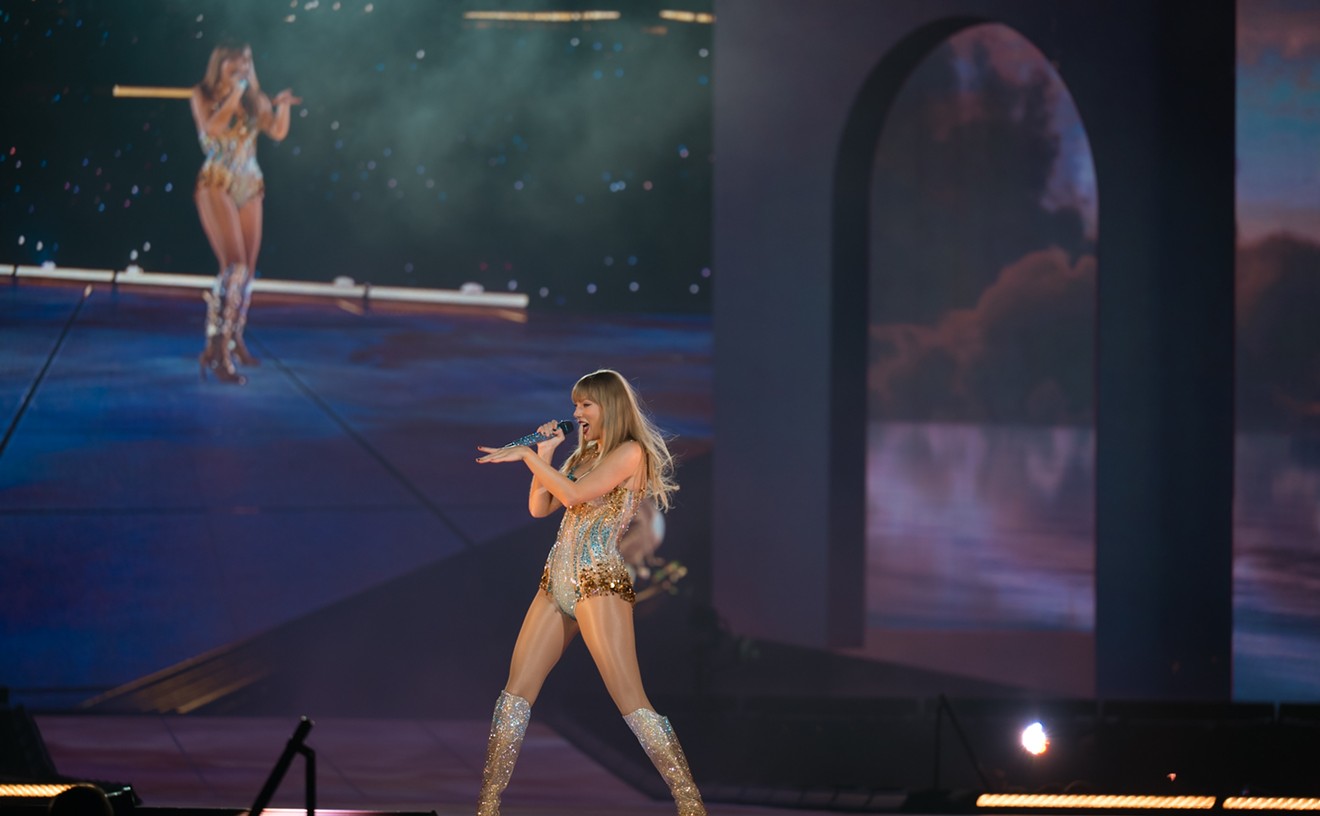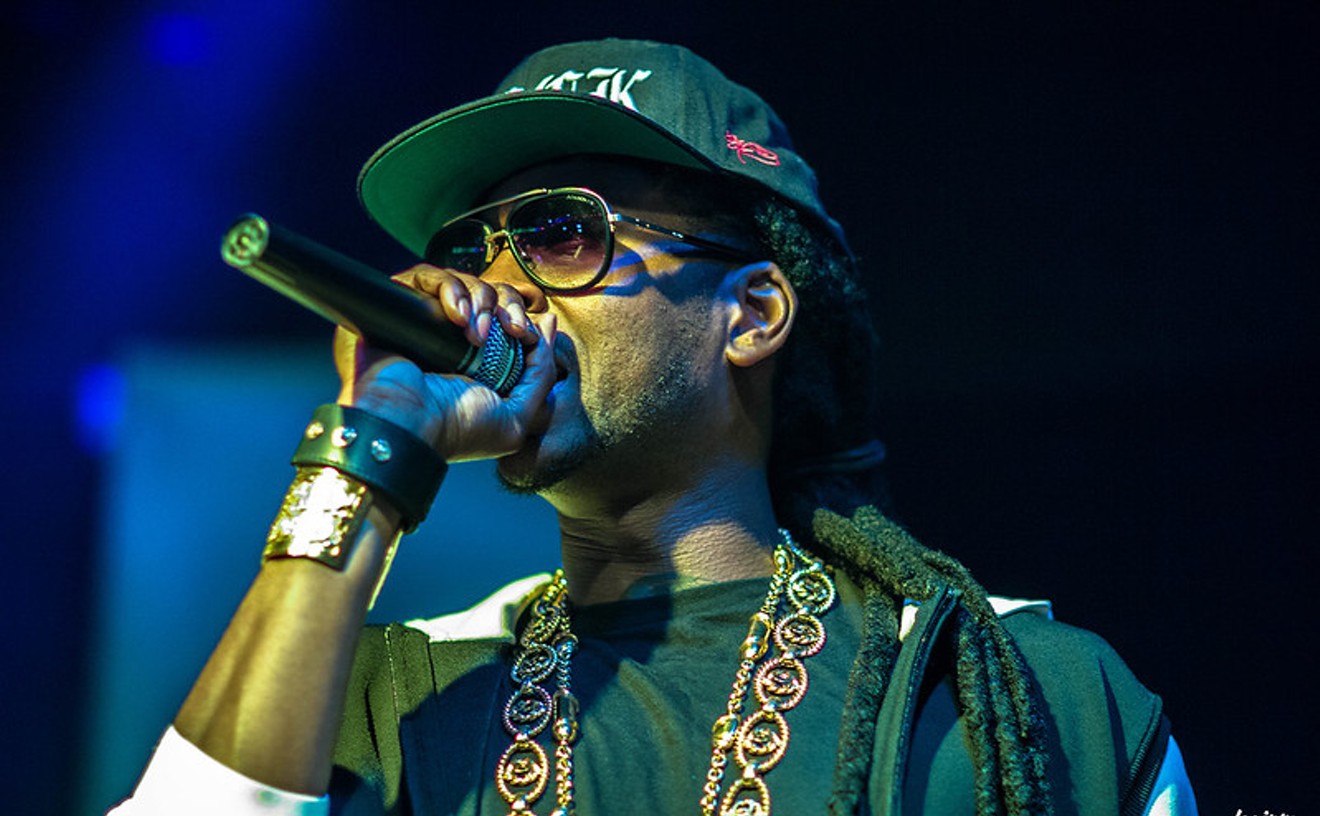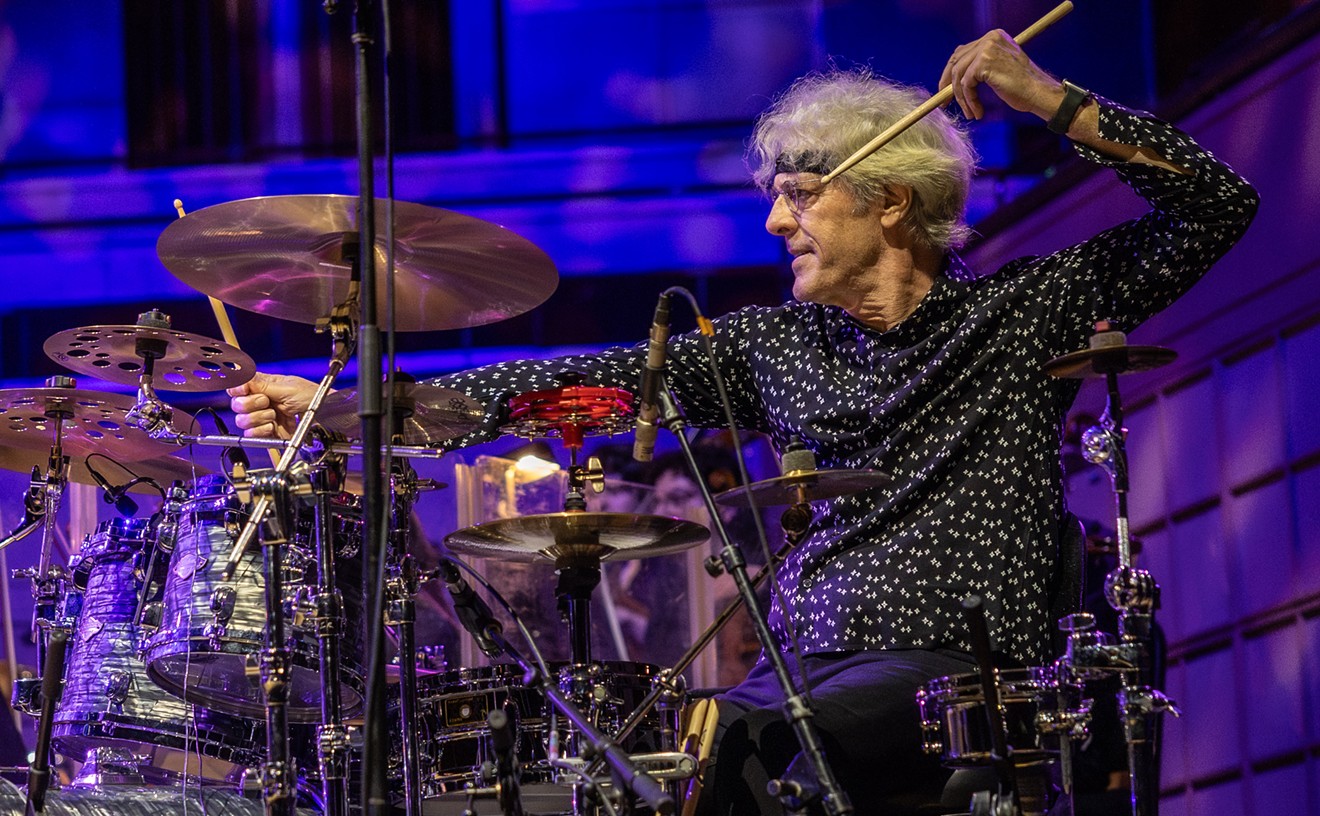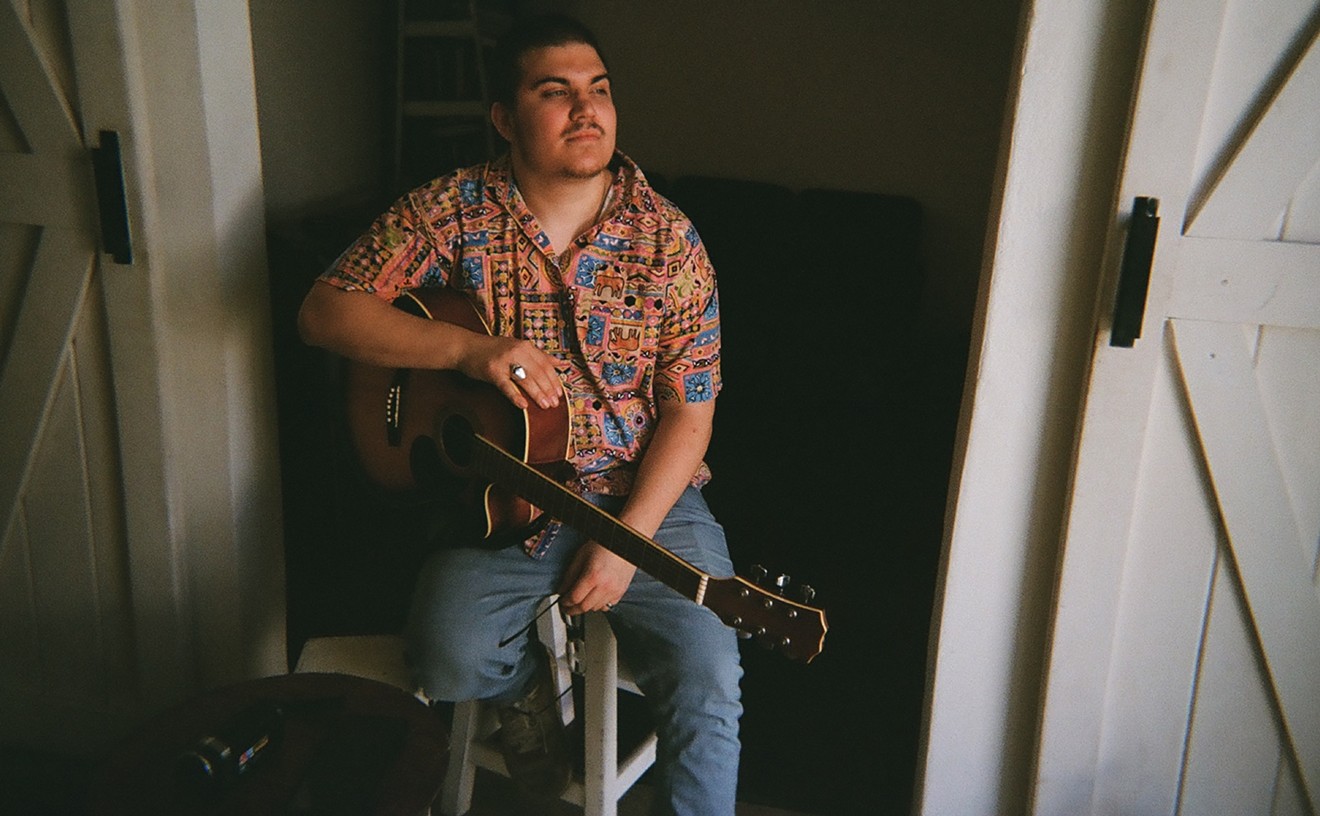To Goldstein and the dozens of other writers who flocked to San Francisco 25 years ago, that town beckoned in the distance like the undiscovered country--virgin territory ripe for discovery, untainted by the grubby hands of the music industry that would eventually come to the Bay Area and wine and dine local talent "like the last available shikse in the promised land," Goldstein noticed.
But Goldstein also cautioned in his piece, titled "San Francisco Bray," that once those bands were discovered, they would fall prey to greed and ruin, finally wilting under the media spotlight that accompanies the discovery of any new fad or trend.
"The most fragile thing to maintain in our culture is an underground," Goldstein wrote. "No sooner is a low-rent, low-harassment quarter discovered than it appears in color spreads on America's breakfast table...The new bohemians needn't worry about opposition these days; just exploitation."
It's curious, more than two decades after this piece was written, to apply these words (of caution, of promise) to our own "scene," if that's indeed the word for what you'd call a few hundred bands trying to get booked into a few dozen clubs so a few people might see them on a Wednesday night. (And one can't help but chuckle at the thick irony found in the phrase the new bohemians needn't worry about opposition because when Goldstein wrote his piece, Edie Brickell and Kenny Withrow were still into Captain Kangaroo, not Captain Trips.)
If one were to follow Goldstein's definition of what makes a scene most--interesting, vital music created by several handfuls of artists in love with their craft--then, indeed, Dallas approaches the ideal: there are dozens of unsigned artists--Cafe Noir, Sixty-Six, Funland, Baboon, Slowpoke, Cowboys and Indians, Tommy Morrell, Spyche, Little Jack Melody and His Young Turks, Marchel Ivery, Bedhead, Ethyl Merman, and so many others who fill clubs most nights--creating challenging, interesting, noteworthy, occasionally brilliant sounds that transcend the baggage attached to the label "local band." To walk into a club and hear Bill Longhorse growl his way through "Swell Hell" or experience the mournful beauty of Gale Hess' violin playing or the swingin' stomp of Erik Swanson is to believe all the music you will ever need can be found inside the city limits.
And yet, a scene isn't defined just by the mere existence of bands and clubs; it isn't something so easily manufactured. Deep Ellum and Lower Greenville and even Exposition Park are more restaurant scenes than music scenes, anyway, with clubs outnumbered by trendy eateries and furniture stores and upscale bars. Rather, a scene is defined and sustained by the passion and knowledge of those who would choose to be a part of it--passion and knowledge not only about one or two bands, but about the entirety of music.
There is really no Dallas music scene; if one existed in the mid to late '80s, it has long disappeared, the victim of greedheads and trendhoppers and fadseekers who came into Deep Ellum looking to claim every square inch as their own. No, this column is not another lament for the so-called Good Ol' Days (that really existed only in memory). Rather, it's part of a search for the passion--the dialogue between band and audience, the feeling that musicians are in this for the joy of performing instead of amassing crowds who pay no attention to the music--that seems to be lacking in this town.
Consider why, with all the bands that have been signed to major labels in recent years (from Reverend Horton Heat to the Toadies to Jackopierce to Tripping Daisy), there has been no talk among the national magazines of a "Dallas scene." In its recent year-long quest for the great American rock and roll town (titled: "A Year in the Life of Rock and Roll"), Spin ignored Dallas completely, going instead to places like New Orleans, Chicago, and, of all places, Columbia, Missouri. Even better, Alternative Press recently referred to Bedhead as an "Austin band."
Why? Because Dallas has no identity as a music city. It's become just another stop on the map where musicians ply their trades in hopes of giving up their day jobs. Bands have tasted the promise of success, watched as peers and contemporaries from Pantera to the New Bos to Brutal Juice landed major-label deals, and now bide their time till they are discovered. But remember, every band's a local band somewhere, and a few just happen to be from Dallas.
Crushing masses of people do not head to Deep Ellum on Tuesdays or Wednesdays unless some touring act is playing Trees or the Galaxy Club or Deep Ellum Live. The crowds do come on weekends and line up to get into the Art Bar or the Bone, heading to the clubs when Reverend Horton Heat or Course of Empire or the Toadies are in town--but only because these local bands have been given the stamp of approval from executives in Los Angeles or New York. The Toadies didn't even draw large crowds in Dallas until the eve of the release of their major-label debut Rubberneck, and, even then, the show was free.
And this apathy isn't reserved for local musicians. When the Mekons (one of rock's all-time greats) and heralded newcomer Jeff Buckley came through town in recent months, they performed to sparse crowds of maybe 75 people at the 21st Amendment, and there is nothing more heartbreaking than watching artists give their all to an empty room. Kathy McCarty's tremendous set at Poor David's a couple of weeks ago was attended by maybe 50 people, an embarrassing, shamefully low turnout. The reason? Dallas audiences don't have enough passion about music to seek out artists who have not been anointed with national contracts. Or when they do come out for a band like Jesus Lizard, they throw beer bottles at the lead singer, expressing admiration and gratitude with broken glass.
One local music critic calls Dallas a "quick hit" town. One in which people latch onto a band like Tripping Daisy or Jackopierce for a moment because they are supposed to, been told to because these bands have been validated by a crowd that has few reference points and fails to understand that so much of what defines the experience of music is the connection with a band. It's a connection with the power of enormous guitars, the exuberance or rage of its lead singer, the cathartic or joyful package containing it all. Good marketing and imitation do not make art, no matter how artfully done.
Dallas truly ought to be the music capital of Texas--not Austin. This city possesses one of the richest musical heritages in the country; the names of those who were born here, performed and recorded here, who rose to fame or fell to ignominy here reads like a who's-who of influences: Robert Johnson, Bob Wills, T-Bone Walker, Steve Miller, Lefty Frizzell, Stevie Ray Vaughan, Blind Lemon Jefferson, Ray Charles, Charlie Christian, Freddie King, Gene Vincent, Boz Scaggs, hell, even Marvin "Meat Loaf" Aday and John Nitzinger of "D.O.A." fame.
And yet, where Austin devotes so much of its resources and energy preserving its own legacy, we forget ours, discarding it in favor of the flavor-of-the-moment.
Right now, one of Dallas' all-time greats still struts among us: Ronnie Dawson is a legend--no, wait, he's more than that. A legend implies that his best work is behind him, that he's known best for what he did instead of what he's capable of accomplishing in the future. But Dawson, the great "Blond Bomber" who once shared stages with Gene Vincent and so many others at the "Big D Jamboree" in the late '50s, is still relegated to cult fixture at best: he draws his die-hard fans whenever he performs, but that audience should be multiplied 10 times over. He should be adored and revered in his hometown, not merely accepted till something else comes along.
When people talk about the Austin scene, this is what they mean: when Junior Brown--a young man who only sounds authentic--performs every Sunday at his regular gig at Austin's Continental Club, it's impossible to get in. People show up not only to watch, but to listen; they are able to acknowledge his influences, discuss his technique, idolize his ability. Yes, they listen. In Dallas, we barely even hear.










